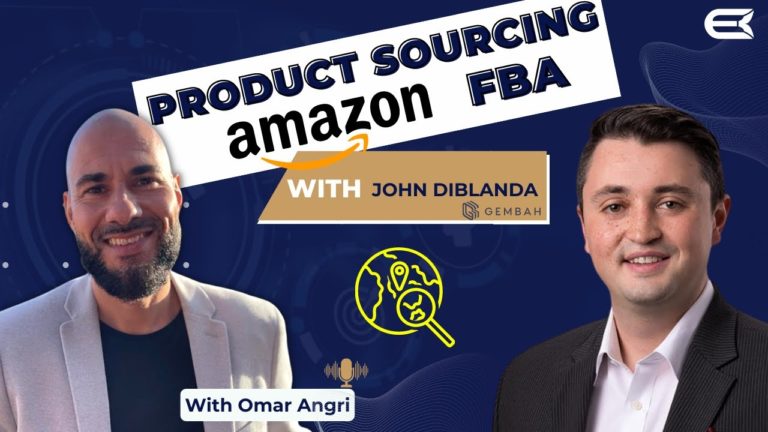Imagine your company needs a crucial component on short notice for your latest product.
You have two options:
Scramble to find a supplier at the last minute or rely on a well-established sourcing process that ensures quality and timely delivery.
Which scenario sounds better?
The sourcing process is the backbone of effective procurement. It ensures that your business gets the best products from the best suppliers. In this article, we’ll explore what the sourcing process is, how it differs from procurement, and provide actionable tips to improve both.
What is the sourcing process in product development?
The sourcing process in product development involves identifying and evaluating potential suppliers to meet your product’s needs. This stage includes defining quality and quantity metrics, conducting market analysis, and selecting suitable suppliers.
Choosing the right partners ensures reliable, high-quality supplies that align with your business goals. The sourcing process is crucial for laying a strong foundation for your product development, helping you build an efficient, cost-effective, and resilient supply chain to market fluctuations.
Sourcing process vs procurement process: What’s the difference?
If you think sourcing and procurement are synonymous or, in layman’s terms, the same thing when it comes to getting supplies for an organization, we’re sorry to burst your bubble…
Sourcing and procurement are vastly different.
Before you procure, you source.
Sourcing is the stage where an organization’s needs are identified, quality and quantity metrics are defined, supplier research is done, and the global sourcing company vetting process chooses the ideal suppliers that fit the bill.
It is an essential step to lay out the company’s objectives and the non-negotiables when it comes to the story a brand wants to convey through its product quality.
Procurement begins after a signed contract.
Procurement covers the steps that come after sourcing
That is, the process of purchasing goods or services from a supplier. These suppliers were vetted during the sourcing process. Procurement helps streamline an organization’s production process while saving costs and time and ensuring top-notch product quality.product quality. All this is done while building a strong supplier relationship.
Want an example of how procurement can impact your organization’s bottom line and revenue?
Imagine a late shipment or faulty inventory. Now, imagine how that can affect your workforce productivity. While perfect sourcing and procurement processes are a myth, improving their efficiency is a great place to start.
How to improve your sourcing process (and your procurement process in turn)
Every organization wants to produce more at a low cost while maintaining excellent quality. Here are some tips for introducing efficient sourcing and procurement processes that help boost productivity and procurement process efficiency.
1. A better procurement process starts with strategic sourcing
Rather than focusing on just the cost of a product or service, strategic sourcing is an outlook that focuses on the overall value delivered by a vendor. This this could include elements like having good communication and being highly collaborative.
Just as sourcing helps organizations assess their objectives, strategic sourcing ensures organizations stay true to their ‘big picture’ vision. Apart from enabling you to build a long-term relationship with vendors, strategic sourcing also helps you in cost savings, reducing risk, and enabling innovations. To help you with the how, here’s a mnemonic reference on what the process of strategic sourcing looks like:
2. One place for all information – Centralization
Wouldn’t you agree that time flies when you’re trying to find a vendor’s information but you don’t know where it’s stored?
That’s why the first priority is organizing information during your sourcing process.
Scattered data is a big red flag, whether it’s inventory details, vendor information, or accounts payable. Centralizing information in one place makes procurement more accessible and, thereby, efficient. In this way, centralizing information is key to making crucial procurement decisions efficiently and effectively.
3. Expand your network
Great things happen when you partner with the right professionals. Since the sourcing and procurement processes are quite complex and have multiple layers, having a team outside your organization helps you have a different perspective on procurement decisions, such as which procurement process works best for your business.
- Would automation help?
- What sourcing should be prioritized?
- How can you make the process simpler?
You get the gist. Instead of you having to spend time on the nitty-gritty, consider outsourcing the decisions by partnering with a team that lightens the load and helps you upgrade your sourcing and procurement process.
4. Tech-proof the sourcing process
It’s no secret that technology has a huge impact on modern-day sourcing and procurement processes. Whether you’re sourcing suppliers, using digital contract management, or reviewing and approving orders, ensure your operations are laced with the right technology.
Integrating intelligent software solutions helps companies leverage valuable data, build transparency across processes, track spending, and drive operational performance.
For instance, team members across verticals can view purchase orders, technical specifications, and vendor lists, thereby increasing supply chain visibility. Technology isn’t just limited to helping organizations get the right data. It also helps keep track of capital spent and decrease Maverick spending, which could damage the bottom line.
5. Data speaks, pay attention
Build data dashboards that help your team look at real-time supply chain data in a digestible format.
With a clear data dashboard, you’d have more clarity on the pricing, budget, and products to source and a better capacity to build a strong relationship with your vendors. Having access to real-time data also makes it convenient to optimize inventory and establish feedback loops on where to improve, where to spend more, and where to reduce costs.
Data helps interpret the ‘what’s going on’ easily and helps you build a strategy that makes sourcing and procuring more effective.
6. Automate the game
Be it manual invoice management, placing repeat orders, or centralizing information—while important to the organization, these tasks are monotonous and cumbersome.
Save a significant amount of time and money by automating these repetitive workflows. Automation software like Kissflow Procurement Cloud and TYASuite, are advanced enough to extract data, structure them, move them into files and folders, interpret text, engage in conversations, and more.
Integrating solutions like these should help reduce human error and bring more consistency throughout your sourcing and procurement cycle. Since you automate menial tasks, your team has more time to focus on nurturing vendor relationships and adding value to the organization’s overall growth.
7. Cost reduction isn’t the only objective
When it comes to sourcing and procurement, having cost reduction as the only objective is a myopic attitude and can put your business in a dangerous position. Markets are continuously pivoting, you need to be strategic with sourcing and procurement. What if you choose a vendor for their lower costs but they are unable to adjust to the last-minute changes in demand for your product?
That’s why strategic sourcing and procurement are more than cost reduction.
They are about building a reliable and scalable supply chain. Improving sourcing and procurement can sometimes involve giving your teams enough time to focus on value-add activities and building resources to innovate.
Keys to consider within your sourcing process
Supplier Relationship Management
Building strong supplier relationships is crucial for a successful sourcing process. Effective supplier relationship management helps ensure reliability, quality, and long-term partnerships. Here are key aspects to consider:
- Communication: Maintain open and frequent communication with your suppliers to foster trust and transparency. Clear communication helps resolve issues quickly and keeps all parties aligned with business goals.
- Collaboration: Work closely with suppliers to develop collaborative relationships. This approach encourages innovation and can lead to better solutions tailored to your specific needs.
- Performance Monitoring: Regularly assess supplier performance using key performance indicators (KPIs) such as delivery times, quality of products, and responsiveness. This helps in identifying areas for improvement and recognizing top-performing suppliers.
Evaluation Criteria for Supplier Selection
Choosing the right suppliers is essential for effective sourcing. Establishing clear evaluation criteria helps in selecting credible suppliers that meet your business requirements. Consider these key factors:
- Quality: Ensure the suppliers can consistently deliver high-quality products that meet your specifications.
- Cost: Evaluate the cost structure and pricing to ensure it aligns with your budget while considering total cost of ownership.
- Reliability: Assess the supplier’s reliability in terms of delivery times and adherence to contract terms.
- Compliance: Check for compliance with industry standards and regulatory requirements to avoid potential risks.
Strategic Sourcing Process
Implementing a strategic sourcing process aligns your procurement activities with your business goals. This approach helps optimize costs, reduce risks, and enhance supplier performance. Key steps include:
- Market Analysis: Conduct thorough market analysis to understand the supply market and identify the best suppliers.
- Risk Mitigation: Develop strategies to mitigate supply chain risks, such as having backup suppliers.
- Continuous Evaluation: Regularly review and refine your sourcing strategies based on performance data and market trends.
Managing Supply Chain Risks
Supply chain risks can disrupt your operations and impact your bottom line. Effective risk management strategies help in ensuring a consistent supply of goods. Focus on these areas:
- Identification: Identify potential risks in your supply chain, such as supplier reliability and market fluctuations.
- Contingency Plans: Develop contingency plans to address disruptions, including having backup suppliers and alternative sourcing options.
- Monitoring: Continuously monitor supply chain risks and adjust your strategies as needed to maintain resilience.
Continuous Improvement and Supplier Performance
Continuous improvement and regular evaluation of supplier performance are vital for maintaining a high standard in your sourcing process. Key actions include:
- Performance Metrics: Establish key performance indicators (KPIs) to monitor supplier performance, such as delivery times, quality, and responsiveness.
- Feedback Loops: Create feedback loops with suppliers to address performance issues and drive improvements.
- Regular Audits: Conduct regular audits and assessments to ensure suppliers meet your evolving business requirements and quality standards.
Collaborative Relationships with Suppliers
Fostering collaborative relationships with suppliers can lead to better procurement outcomes and innovation. Here’s how to enhance collaboration:
- Joint Planning: Engage in joint planning sessions with suppliers to align on business goals and strategies.
- Open Communication: Maintain open communication channels to facilitate transparency and trust.
- Innovation Partnerships: Partner with suppliers to co-develop new products or processes, leveraging their expertise and capabilities.
Cost Management and Favorable Terms
Effective cost management and negotiating favorable terms with suppliers are crucial for maximizing value. Focus on these strategies:
- Total Cost of Ownership: When evaluating supplier proposals, consider the total cost of ownership, not just the initial purchase price.
- Negotiation: Negotiate favorable terms that balance cost savings with quality and reliability.
- Cost Savings Initiatives: Implement cost savings initiatives such as bulk purchasing or long-term contracts to secure better pricing and terms.
Types of Sourcing and Sourcing Strategies
Exploring different types of sourcing and developing effective sourcing strategies can optimize your procurement process. Consider these approaches:
- Single Sourcing: Relying on one supplier for a specific product or service can streamline procurement but may increase risk.
- Dual Sourcing: Using two suppliers for the same product or service to mitigate risks and ensure competitive pricing.
- Strategic Sourcing: Focus on long-term supplier relationships and overall value rather than just cost.
Supplier Base and Supplier Portfolio Management
Maintaining a diverse supplier base and effectively managing your supplier portfolio are crucial for flexibility and risk mitigation. Key considerations include:
- Diversity: Ensure a diverse supplier base to reduce dependency on any single supplier and enhance supply chain resilience.
- Regular Reviews: Conduct regular reviews of your supplier portfolio to identify potential risks and opportunities for improvement.
- Primary Suppliers: Identify and maintain strong relationships with primary suppliers who are critical to your operations.
Technology and Digital Transformation in Sourcing
Leveraging technology and digital tools can significantly enhance your sourcing process. Focus on these areas:
- Procurement Software: Implement comprehensive procurement software to streamline operations and improve data visibility.
- Digital Tools: Use digital tools for tasks such as supplier selection, contract management, and performance monitoring.
- Data-Driven Decisions: Utilize data analytics to make informed procurement decisions and optimize your sourcing strategies.
Compliance with Regulatory Standards
Ensuring compliance with regulatory standards is essential for minimizing risks and maintaining trust with stakeholders. Key steps include:
- Understanding Regulations: Stay informed about relevant industry standards and regulatory requirements.
- Regular Audits: Conduct regular audits to ensure compliance with all applicable regulations.
- Documentation: Maintain thorough documentation of compliance efforts and supplier certifications.
Supplier Contracts and Negotiations
Effective management of supplier contracts and negotiations can secure favorable terms and minimize risks. Key practices include:
- Clear Contracts: Ensure supplier contracts are clear and detailed to avoid misunderstandings and protect your interests.
- Negotiation Skills: Develop strong negotiation skills to secure favorable terms that balance cost, quality, and reliability.
- Contract Management: Implement a robust contract management system to track and manage supplier agreements.
Market Trends and Analysis
Staying informed about market trends and conducting regular market analysis can help you make strategic sourcing decisions. Focus on these areas:
- Market Insights: Regularly gather and analyze market insights to understand supply market dynamics.
- Trend Analysis: Monitor trends in pricing, availability, and supplier performance to anticipate changes and adjust your strategies.
- Competitive Edge: Use market analysis to identify opportunities for gaining a competitive edge in your sourcing and procurement activities.
Work with a team of experts to optimize your sourcing process
On top of all the suggestions we’ve included in this article, remember one thing:
You don’t have to go at it alone.
There are plenty of experts out there that you can work with to help simplify and improve your entire sourcing and procurement process.
With its vast vetted network and intelligent platform, Gembah can help you to upgrade your sourcing and procurement process by matching you with ideal manufacturers from anywhere around the world.



